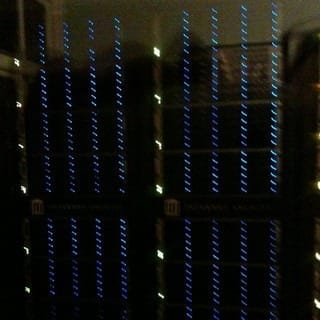
OVER the next decade, approximately five billion people will become connected to the Internet.
The biggest increases will be in societies that, according to the human rights group Freedom House, are severely censored: places where clicking on an objectionable article can get your entire extended family thrown in prison, or worse.
The details aren’t pretty. In Russia, the government has blocked tens of thousands of dissident sites; at times, all WordPress blogs and Russian Wikipedia have been blocked. In Vietnam, a new law called Decree 72 makes it illegal to digitally distribute content that opposes the government, or even to share news stories on social media. And in Pakistan, sites that were available only two years ago — like Tumblr, Wikipedia and YouTube — are increasingly replaced by unconvincing messages to “Surf Safely.”
The mechanisms of repression are diverse. One is “deep packet inspection” hardware, which allows authorities to track every unencrypted email sent, website visited and blog post published. When objectionable activities are detected, access to specific sites or services is blocked or redirected. And if all else fails, the entire Internet can be slowed for target users or communities.
In other cases, like in Ukraine, sites are taken offline with distributed-denial-of-service attacks, which overwhelm a server with digital requests, or else the routing system of the national Internet system is tampered with to make entire sites mysteriously unreachable. Entire categories of content can be blocked or degraded en masse; in Iran, we hear that all encrypted connections are periodically severed and reset automatically.
How common is each tactic? Reliable data can be scarce. Measuring patterns of censorship brings its own risks: If you repeatedly check whether “objectionable” content is being blocked, you risk becoming a target yourself.
And while the technologies of repression are a multibillion-dollar industry, the tools to measure and assess digital repression get only a few million dollars in government and private funding. Private and academic centers like the Citizen Lab in Toronto are building detection tools, but we are still in the early days of mapping the reach of digital censorship.
Of course, detection is just the first step in a counterattack against censorship. The next step is providing tools to undermine sensors, filters and throttles.
Again, the groundwork is being laid. For years, a vibrant community of engineers from San Francisco to Beijing have collaborated on circumvention technologies to shield dissidents from surveillance. One such tool, called Tor, has been used by tech-savvy dissidents around the world for over a decade.
Our travels have taken us to North Korea, Saudi Arabia and other countries grappling with repression. Yet when we meet dissidents and members of harassed minorities, we are surprised by how few of them use systems like Tor.
Trust is perhaps the most fundamental issue. In Iran, online bazaars sell services that promise secure access. Yet rumors swirl that these services are covertly provided by the Iranian government, and can be monitored or terminated at any time.
Scalability is another problem. One popular approach, virtual private networks, allow users in a repressively censored place like Syria to “proxy” the connections through a computer in a more open place like Norway. But when thousands of users connect to a single intermediary, the repressive government notices, and shuts them down.
The Latest on: Internet Freedom
[google_news title=”” keyword=”Internet Freedom” num_posts=”10″ blurb_length=”0″ show_thumb=”left”]
via Google News
The Latest on: Internet Freedom
- The steady slide towards tyranny: How freedom dies from A to Zon May 7, 2024 at 11:31 am
This steady slide towards tyranny, meted out by militarized local and federal police and legalistic bureaucrats, has been carried forward by each successive president over the past fifty years ...
- 'Running joke': Internet rips Joe Scarborough as he suggests firing Fox News host for 'Trump-like joke' on Paul Pelosi's violent assaulton May 7, 2024 at 9:44 am
Scarborough cited the recent segment from Fox News featuring Campos-Duffy joking about the assault on Pelosi during a home invasion in 2022 ...
- Freedom Mobile Internet and TV with Promo Pricing Lands May 7 [Update]on May 6, 2024 at 7:01 pm
Quebecor’s Freedom Mobile is set to reintroduce its home internet services and launch a new customizable TV option, aiming to provide a comprehensive and affordable entertainment package to its ...
- Jack Dorsey Leaves BlueSky Board and Calls X ‘Freedom Technology’on May 6, 2024 at 12:00 am
The Twitter co-founder took to the Musk-owned platform, now rebranded X, to tout his new philanthropic grants to open internet protocols, which he described as “freedom technology.” He also added X to ...
- 'Vile piece of filth': Internet slams Rachel Campos-Duffy as she mocks Nancy Pelosi's husband after she gets Presidential Medal of Freedomon May 5, 2024 at 6:06 am
Campos-Duffy suggested that individuals like former President Donald Trump, and Elon Musk should have received the honor instead ...
- ‘Liberal attitude’ towards Internet use hinders effective social media monitoring — PTFOMSon May 3, 2024 at 12:12 am
The Presidential Task Force on Media Security (PTFOMS) has reported difficulty in monitoring the number of media outlets operating on social media, citing the government’s liberal attitude towards the ...
- How EU Law Has Made the Internet Less Free for Everyone Elseon April 29, 2024 at 4:00 am
Like the Biden administration, the European Union elites are seeking to crush free speech on the Internet in the name of preventing “hate speech” and ...
- FCC's net neutrality vote could affect your internet speed. We explainon April 26, 2024 at 6:25 am
The Federal Communications Commission is set to vote Thursday on whether to reinstate rules that would prevent internet service providers from disrupting your internet speed. If approved, the vote ...
- After 6 years, the FCC has voted to restore net neutrality regulations in a win for the open interneton April 25, 2024 at 5:00 pm
Under former chairman Ajit Pai, the FCC of 2018 rolled back those regulations with a proposal it obnoxiously named "Restoring Internet Freedom." That reversal has now been re-reversed, in a ...
- Internet service needs the marketplace, not heavy-handed net neutrality regulationon April 25, 2024 at 2:00 am
The FCC should not reinstate net neutrality because it will be a drag on better service and lower prices, the author argues.
via Bing News










